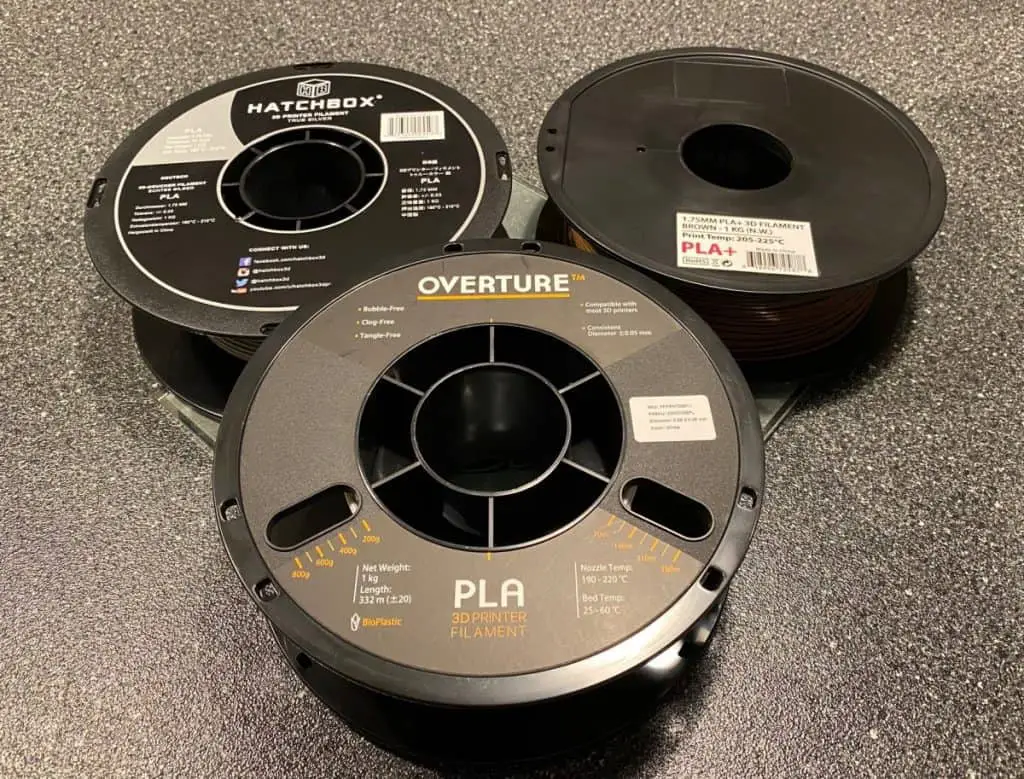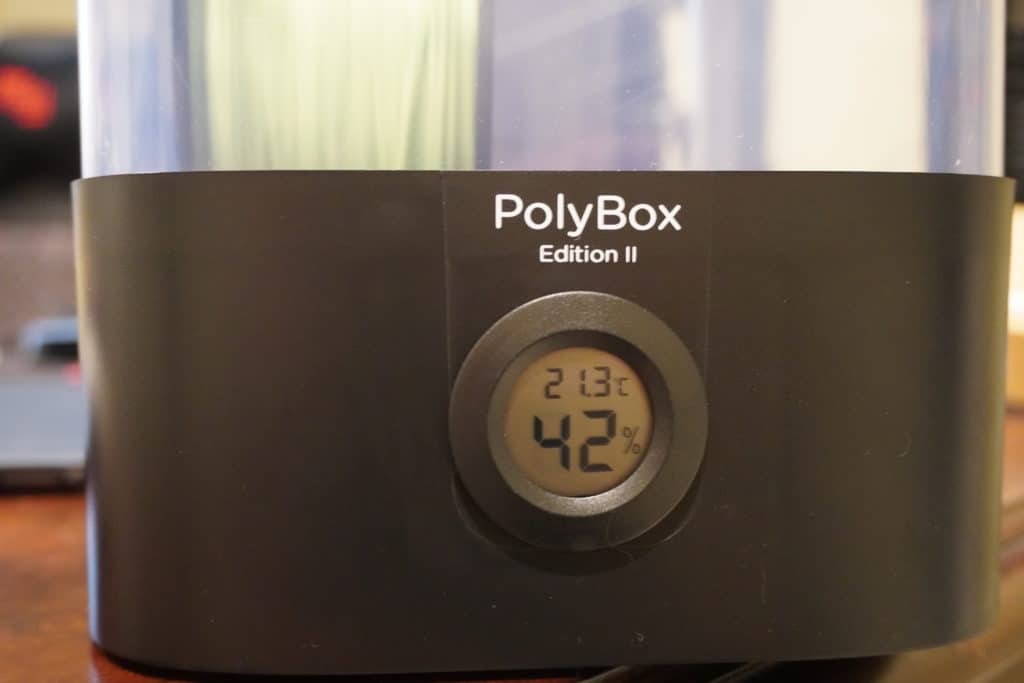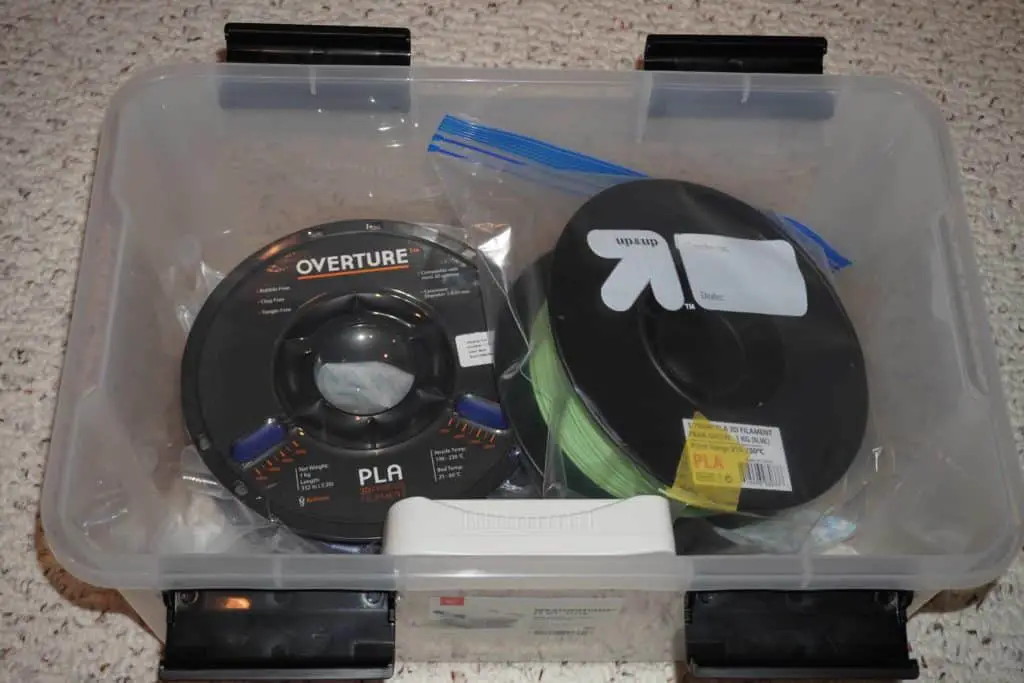Drying your filament is often necessary to maintain 3D print quality. You may be wondering if it’s possible to dry your filament in a microwave since it’s so similar to an oven.
You cannot dry filament in a microwave due to its uneven heating, lack of prolonged temperature control, insufficient water evaporation, and tendency to damage the dipole molecules in some filaments. Attempting to dry filament in a microwave will most likely overheat, damage, or melt it.
This article will explore how a microwave works and explain in-depth why drying filament in a microwave won’t work.

A Microwave Will Heat but Not Dry the Filament
Microwaves are designed to heat, not dry. They target the water molecules of the objects and heat those instead of the objects themselves.
A convection oven or dehydrator heats the air and blows that over the object to dry it. The heat accelerates evaporation, drying the filament and then removing the moisture by way of air circulation.
The air is constantly circulated within the machine, replacing the removed moisture from the filament with new hot air and drying it. A dehydrator specifically pushes the moist air outside the device through vents and pulls in dry air from outside to create a moisture-free environment.
Microwave won’t do this. Instead, it’ll retain the moisture inside of the filament and heat it there. This will, in a sense, boil the filament instead of drying it.
Water also absorbs energy very efficiently–meaning the water molecules in the filament will heat up too quickly in a microwave, causing the filament to boil and melt rather than slowly evaporate out of the filament.
Additionally, microwaves heat water in objects because their radiation interacts with the dipole of the water molecules. Some filaments, such as TPU, contain dipoles in their material.
In the case of TPU, the energy waves in the microwave will excite not only the water molecules but also the molecules in the composition of the filament. It’ll lead to the filament’s structure becoming damaged as well as overheated.
Microwaves Heat Unevenly
A microwave would heat your filament unevenly, leading to some parts, most likely the outside, being heated more than others.
Microwaves don’t distribute heat energy gradually or evenly. They heat things by creating a wave pattern absorbed by the food, causing the water molecules to vibrate and produce heat.
These waves sometimes hit each other; they cancel each other and no longer create heat when that happens. That’s why parts of your food sometimes come out cold, and others burn hot.
Microwaves also heat from the outside in. Thus, a roll of filament might become very heated on the outside and not as heated on the inside. It’s because the inside is heated primarily by the conduction of heat from the outer layers.

Overheated Filament Can Be Toxic
The overheated filament can release toxic gasses into the atmosphere. These gasses could be dangerous if inhaled or ingested when absorbed into nearby food.
According to 3D Printerly, the rate at which filament releases toxic gasses is directly proportional to temperature. That means higher temperatures will cause the filament to release larger amounts of harmful particles, emitting more with each temperature increase.
The toxicity of different filaments varies. Some are very toxic, such as those that release styrene, which can cause unconsciousness. PLA filament is considered the least toxic filament, and Nylon is the most toxic.
If you put filament into the microwave, it’ll likely become overheated, even on a very low setting. When that happens, these gasses may be released into the atmosphere and inhaled.
3D printers also melt 3D filament in order to mold different printed objects. During this process, toxins are also emitted. However, 3D printers can be set up in places with better ventilation and in spaces away from food and other people, such as garages or sheds.
Putting filament in a microwave means that any pollution it emits will be in a shared space where food is also prepared and eaten. Thus, it’s best to be avoided.
Microwaves Don’t Have Temperature Control
A filament is very sensitive to different temperatures. If the temperature gets too high, it can easily melt and become damaged. Even ovens, which are popularly used to dry out filament, can melt them if the temperature is too high.
However, ovens also have temperature control, as do filament dryers and most dehydrators. Microwaves, however, don’t have precise temperature controls.
Each different kind of filament has specific temperature requirements. According to 3DP, this is because individual filaments are chemically very different from one another. That’s why every filament needs to be printed at a different temperature in a 3D printer to become soft enough to print.
In a microwave, you don’t have the option to tailor the temperature to your specific filament. Instead, the microwave will blast the filament with high energy, either way, leading to overheating and damage.

Dry Your Filament Using a Dedicated Filament Dryer
By far, the best way to dry your filament is to use a device specifically designed for such a task. A filament dryer is a simple, reliable, and fine-tuned method of drying your filament.
You can find various types of filament dryers available, all of which are up to the task and easy to use. There are even filament dryers that dry the filament on their own while 3D printing, saving you the hassle.
I recommend using the SUNLU 3D Filament Dryer Box (available on Amazon.com). It dries and stores your filament and allows you to 3D print with your drying filament as well. This filament dryer has temperature control and is compatible with 99% of 3D filament spools.
Related Articles
- PLA vs PLA+ – What’s the Difference?
- All About 3D Printer Plastic
- Can You Drill Into and Cut 3D Printed Plastic?
- Does PLA Need to Be Kept Dry?
- Can You Spray Paint PLA? Details Inside!
- Best PLA Glue – The Answer Inside!
Conclusion
Drying filament in a microwave isn’t recommended for several reasons:
- The microwave will heat the water inside the filament instead of drying the filament itself.
- Instead of drying the filament, it will boil the heated water inside the filament and overheat it.
- The filament will be heated unevenly.
- It may release toxic gases.
- Filament requires precise temperature control, which microwaves lack.
Use a filament dryer to dry your filament. You can find various filament dryer types online now, like Amazon.com.
Make sure you check out our YouTube channel, and if you would like any additional details or have any questions, please leave a comment below or join us on Discord. If you liked this article and want to read others click here.
